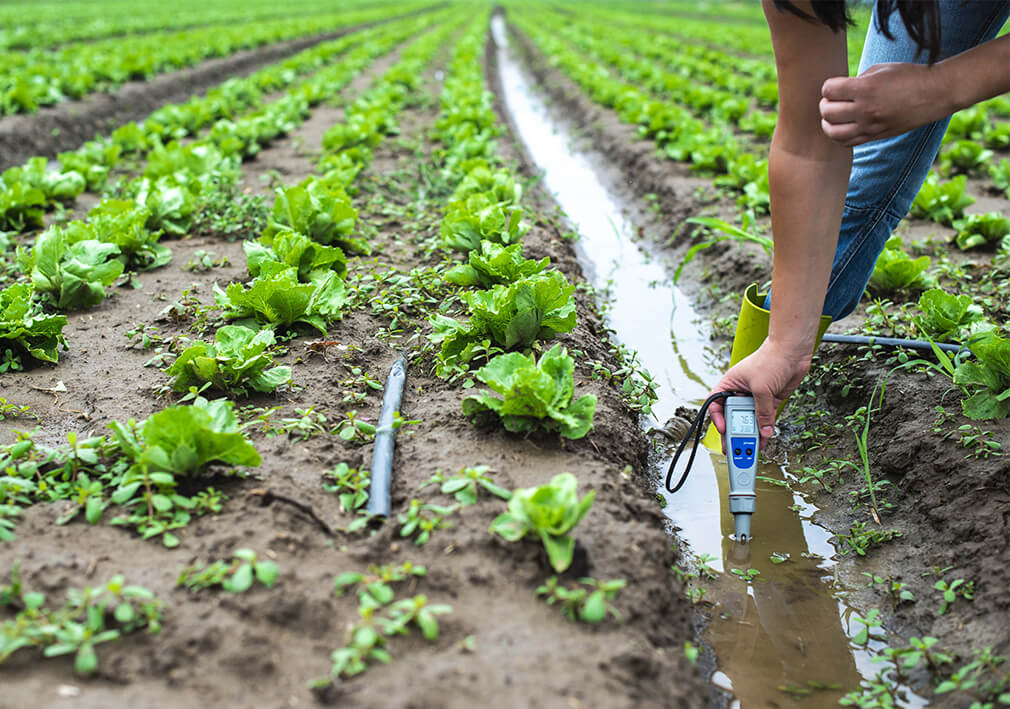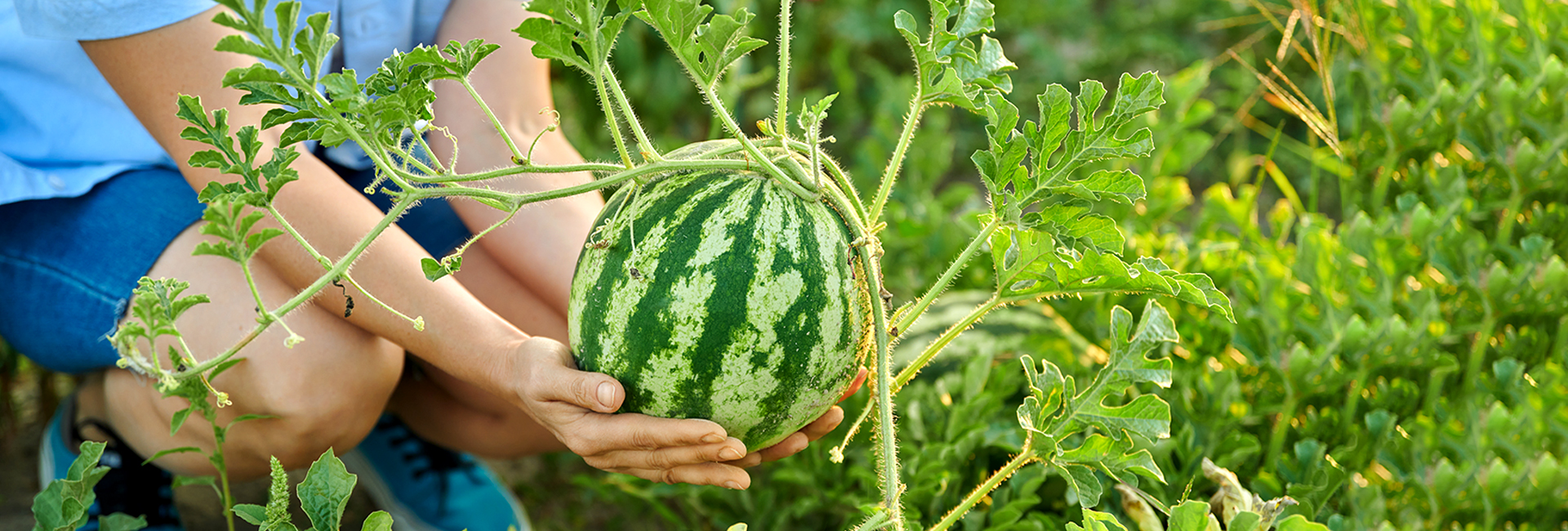Gardeners eagerly await spring’s arrival to soak up the warmer weather and get their hands dirty in the soil.
However, one of the most important decisions a gardener must make is determining the best time to begin planting.
We know that the desire to get seeds in the ground may be strong as warmer weather arrives.
It is crucial, though, to carefully consider factors such as your location’s average last frost date and the specific needs of different plant varieties to set your garden up for success.
We will explore common guidelines for the best time to plant a garden for a variety of plants to help you maximize your harvest.
When to Plant a Garden
Determining the appropriate time to start your garden depends on your location and the plants you want to grow.
Different regions have varying frost dates and optimal temperatures for growth. Each plant has specific temperature requirements and growing seasons.
Typically, the best season to start a new garden is spring.
However, certain plants can be planted in either spring or fall, depending on their needs.
Plants that thrive in colder conditions can be planted during the fall or winter. Annuals and tomatoes should be planted once the weather has warmed up and after the last frost date.
On the other hand, perennials should be planted in the middle of spring or fall.
4 Things to Consider When Planting Your Garden
To achieve a thriving garden, it is essential to consider the following factors:
Hardiness zone
When planting your garden, know your hardiness zone. This allows you to determine which plants can thrive and survive in your area.
The USDA Plant Hardiness Zone Map divides the United States into 13 zones based on the average minimum winter temperatures. Each zone is further divided into subzones “a” and “b.” The temperature in each zone is typically 10°F warmer or colder than the adjacent zone.
While factors like elevation and precipitation can also impact plant survival, this map serves as a valuable starting point.
Avoid the frustration and disappointment of choosing a planting time or plants that are not suited to your zone. By doing so, you can save money and prevent unnecessary stress on your plants. Inappropriate climate conditions can stunt their growth and make them more susceptible to pests and diseases.
First and last frost dates
Once you get your hardiness zone squared away, you must now determine the average first and last frost dates in your area.
To do so, refer to local frost date charts or rely on the good ‘ol Almanac (which can be found online). These resources can give you the average dates of the last spring frost and the first fall frost.
Knowing these dates is essential in making informed decisions about planting, transplanting, selecting suitable plant varieties, and preparing for the colder months.
Soil temperature and preparation
Understanding the appropriate soil temperatures for germination and growth is crucial to cultivating plants. Each plant species has specific requirements, with cool-season crops such as spinach and radishes thriving at 45-60°F, whereas warm-season crops like peppers and melons prefer temperatures exceeding 60°F.
To optimize your soil, it is imperative to assess its pH and nutrient levels. Based on the outcomes of your analysis, incorporating compost, manure, and other amendments can enhance pH balance, drainage, and nutrient content.
Companion Planting
Strategically placing different plants near each other can result in major benefits for your garden.
Take space, for instance. Planting early, short-season crops in the same beds as later maturing crops helps to save space and grow multiple successions of plants in the same space.
The plants’ odors can also have a positive effect on your garden, either repelling them or attracting them. The delicious aroma of herbs like oregano and lavender can attract pollinators like bees.
Also, having a variety of plants can serve as a distraction for insects, as they can usually find their target plants by the color. However, having a blend of plants in your garden can make it challenging for them to find a specific plant.
Seasonal Planting Guide
Below is a comprehensive guide to help you determine the ideal plants to plant during each season:
Spring
What to plant in the spring
- Asparagus
- Broccoli
- Cabbage
- Carrots
- Cauliflower
- Lettuce
- Onions
Best companion plants in the spring
- Cucumbers (pair well with corn)
- Dill (pair well with lettuce, cucumbers, and tomatoes)
- Peas (pair well with carrots, rosemary, and lettuce)
- Radishes (pair well beans, lettuce, and carrots)
- Spinach (pair well with tomatoes, cabbage, and beets)
Summer
What to Plant in the summer
- Eggplant
- Peppers
- Mint
- Onions
- Potatoes
- Squash
- Tomatoes
Best companion plants in the summer
- Tomatoes and basil
- Beets and radishes
- Beans and corn
- Peppers and eggplant
- Cilantro and peppers
Fall
What to plant in the fall
- Beets
- Carrots
- Garlic
- Parsnips
- Radishes
- Turnips
Best companion plants in the fall
- Beans (pair well with potatoes and turnips)
- Dill and thyme
- Onions (pair well with lettuce, spinach, and Swiss chard)
- Radishes (pair well with kale, lettuce, and spinach)
- Spinach and lettuce
Winter
What to plant in the winter
- Eggplant
- Peppers
- Tomato
Best companion plants in the winter
- Beets and radishes
- Cauliflower and celery
- Peas and beans
- Onions and garlic
- Spinach and lettuce
Benefits of Seasonal Planting
Seasonal planting provides a wide range of benefits, including the following:
Better plant success
Planting at the proper time for each season ensures the best conditions for growth. By doing so, you can prevent plants from being affected by extreme temperatures or insufficient sunlight.
Produce that is always fresh
By planting your fruits and vegetables during their prime season, you can enjoy the freshest and most delicious harvest.
Less worry about pests and diseases
Implementing the practice of rotating crops and diversifying plant varieties every season effectively interrupts the life cycles of pests and diseases that may have plagued previous seasons. By introducing new crops, gardeners can discourage pests from establishing a stronghold. As a result, the reliance on harsh chemicals for pest control is significantly reduced.
Better soil health
Utilize the changing seasons to optimize soil health. Take advantage of fallen leaves and cooler temperatures in the fall to enhance planting. In the spring, seize the opportunity to introduce compost and other beneficial amendments for optimal results.
Perennial vs Annual Planting
Perennial plants regrow each spring without needing to be replanted. They offer a cost-effective option, despite potentially having a higher initial cost compared to annuals.
On the other hand, annual plants only live for one growing season and require replanting every year. This can become expensive, especially for larger gardens.
While perennials take time to reach their full size and bloom potential, annuals mature and bloom quickly, delivering immediate results.
What Is Container Gardening?
Container gardening is straightforward: It involves growing plants in containers rather than on the ground, like pots and planters.
This is particularly beneficial for gardeners who are working with limited space or have specific needs.
How Can Container Gardening Affect Planting Times?
Container gardening provides greater flexibility compared to traditional gardening methods.
With container gardening, you have more control over crucial factors like soil quality, drainage, and sun exposure for your plants.
Moreover, the compact nature of container gardens allows for experimentation with various plant combinations and layouts, enabling you to find the perfect aesthetic for your surroundings.
Additionally, the portability of containers allows for the easy transition of plants indoors during colder weather, ensuring their protection and longevity.
Conclusion
Ultimately, the timing of when to plant a garden depends on various factors. However, the timing of when to plant a garden is crucial and can greatly impact the success of your plants.
By following these tips and taking the time to carefully plan out your garden, you can set yourself up for a bountiful harvest and a beautiful outdoor space.
To get started on your gardening, be sure to visit one of our locations today!
FAQs
Frost-sensitive plants face the risk of death or significant harm when exposed to late frost.
If the soil temperature is too low, the process of germination and plant growth may be hindered or delayed. This is because certain plants require warmer temperatures for their enzymes to activate and trigger germination.
Cold and wet conditions can create a favorable environment for the growth of specific diseases and pests, which can pose a threat to your plants.
Before placing your garden plants outside, several important factors need to be taken into consideration.
First and foremost, it is crucial to wait until the last frost date in your area has passed. This ensures that the ground is fully thawed and that the temperatures will not dip below freezing, which could potentially harm your plants.
Also, it is essential to carefully examine the specific requirements of each plant. Tender seedlings, such as peppers, necessitate warmer temperatures compared to more resilient options like spinach.
The right time to start a garden varies depending on various factors, such as your climate and the specific plants you wish to grow. However, it is worth noting that as the year progresses, your options for starting a garden become more limited.




